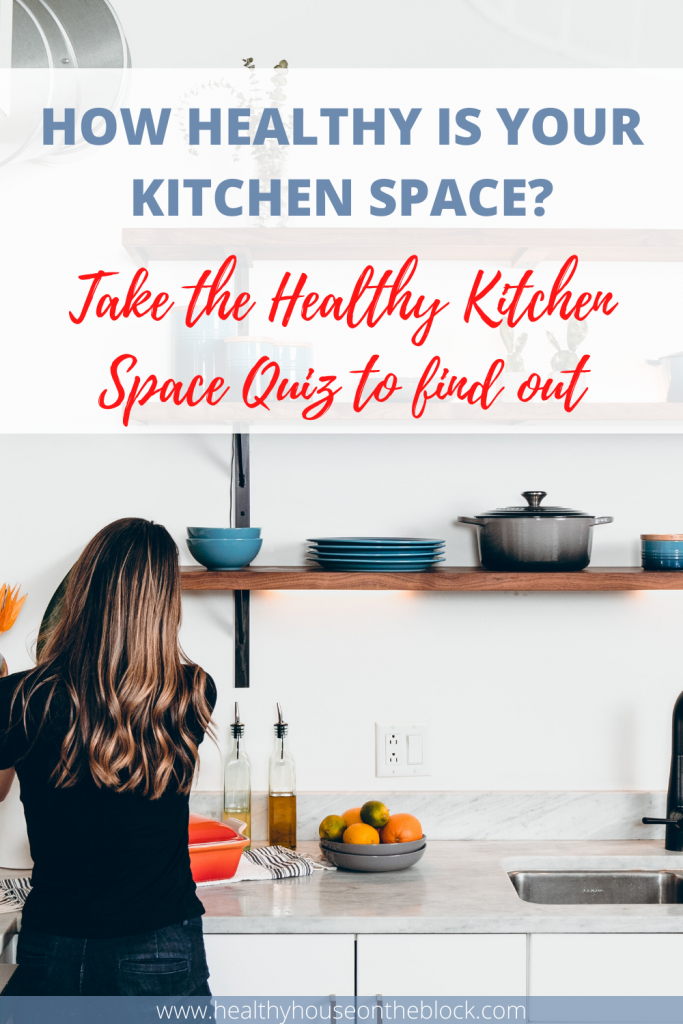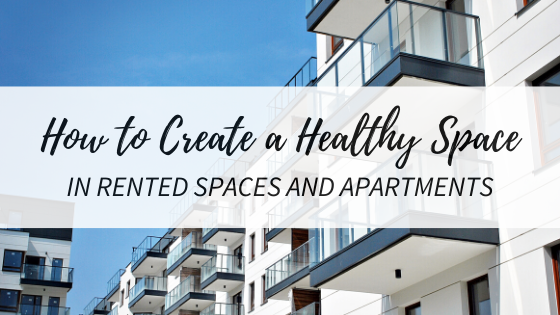
When we talk about creating a healthy space at home, it can be easy to think you don’t have a lot of control if you rent your home. But in actuality, using some healthy home apartment ideas can improve small spaces drastically as there is less altering and contributing to the problems.
Small spaces can be the best places to improve and the best spots to make healthy changes as there’s less to do in general. That being said, some of us rent larger spaces, and it can feel like a lot is completely out of your control. In those instances, I always remind my clients to only change what they absolutely can. There’s no use in worrying about things we cannot change. This stress and worry completely undoes the healthy habits you’re begun to implement.
The key is to be super intentional with your habits and purchases and slowly layer on positive changes. These apartment ideas are intended to be dealt with in just that way. It’s important to take on one small change at a time instead of diving in head first trying to implement every change at one time.
Whether you live in a rented home, townhouse or small space, these apartment ideas will help you improve your home and create a healthy environment you love.
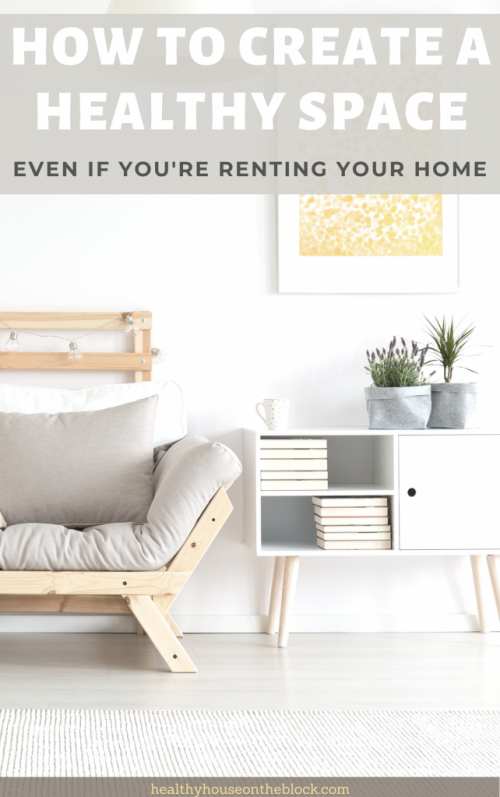
APARTMENT IDEAS TO IMPROVE INDOOR AIR QUALITY
Indoor air quality is an important part of our indoor spaces. We not only spend most of our days indoors, but our indoor air is often more polluted than any outdoor air we come in contact with. This is why it’s important to consider these apartment ideas that will help improve the indoor air in your space. Luckily, raising indoor air quality is often done through really basic, easy habit changes.
Open Windows: This one’s not only top of the list for apartment ideas, but it’s top of the list for home ideas in general. Opening your windows can allow fresh air to flow freely inside as well as allow toxins and stale air to travel freely outside. This idea is called an air exchange, and it is one of the biggest tools when it comes to creating a healthy indoor space. As you may already know, our indoor spaces are much more polluted than our outdoor spaces, and yet we spend the majority of our time indoors.
Try to get in the habit of opening your windows frequently and on a schedule if they can’t be left open at all times.
Remove Dust Often: Dust not only houses dust mites, mold spores and dead skin cells (ew). But it also holds chemicals from cleaning overspray, pesticides brought in from outdoors as well as formaldehyde and VOCs from our carpets, rugs and other textiles.
The great thing is, dust can quite easily be removed. It may take a little bit of work and elbow grease, but it’s well worth it. Vacuuming with a HEPA filter and getting hidden spaces will help remove dust, as will using a wet mop to clean hard floor surfaces.
You can also clean radiators and replace any sort of air filter in your apartment or rented space every 3-4 months to reduce dust from being spread around.
Finally, make sure you’re dusting with a wet cloth or a toxin free spray in order to remove dust from shelves, baseboards and venting grates. This will help make sure that the dust isn’t spread around, but rather collected and washed away.
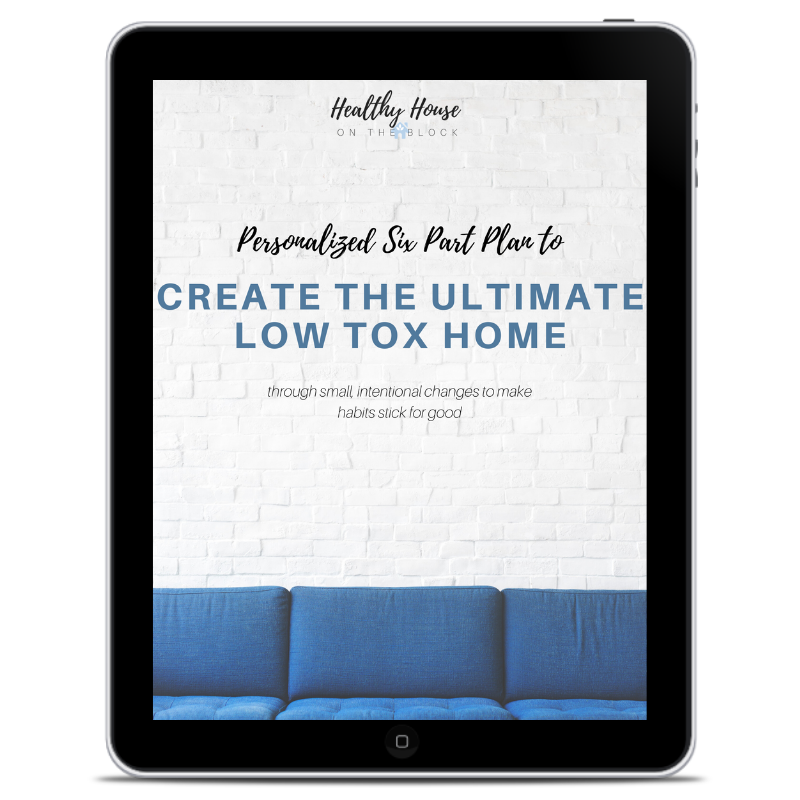
DOWNLOAD MY FREE E-BOOK
Create a No-Shoe Policy: If you can swing it, avoid wearing shoes in your living space. Have a mat at the front door and tray or designated spot for shoes to be left. Shoes have been walking in public spaces, through parks, and work or school. Our shoes not only pick up bacteria, but also toxins and pesticides as we travel around.
Once these toxins and pesticides are in your home, they can easily end up traveling throughout your space and finally landing on dust that’s collected. You can avoid introducing these toxins to your space by committing to a no-shoe policy.
Add Indoor Plants: Indoor plants are SUCH a great way to help purify your indoor air. Plants take carbon dioxide from or exhaled air and turn it into much needed oxygen. Some plants can also absorb VOCs and formaldehyde, removing it from the air. That’s a pretty amazing thing, isn’t it?
Other plants will help regulate odors and indoor humidity, which can help with the indoor climate of your home. This post is all about which indoor houseplants benefit each room of your space. Just be sure you don’t have too many indoor plants clustered in one spot, as this can raise the indoor humidity levels. It’s also important to remember overwatering is another way we raise our indoor humidity levels too much.
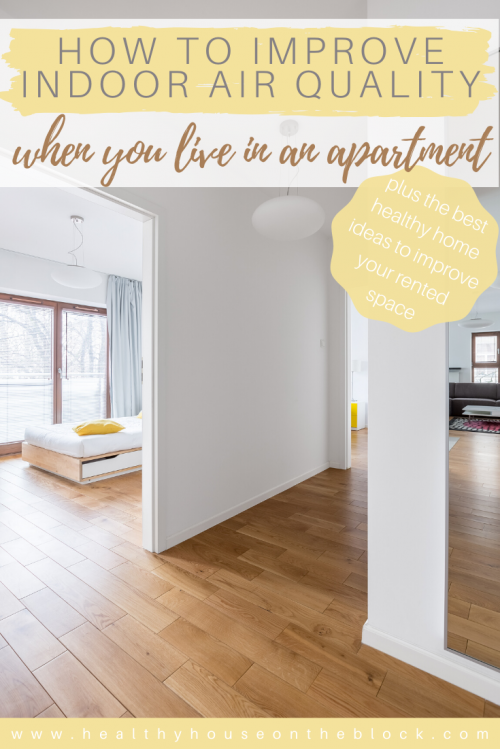
APARTMENT IDEAS TO REPLACE TOXINS
While you may not be able to replace toxins in the building materials or floor coverings, you can cut out a number of toxins and chemicals with some super simple swaps. These apartment ideas to replace toxins are some of the easiest swaps I’ve made in my own home. They take a little bit of planning out sometimes, but once you make the switch, you’re good to go for the long haul.
Synthetic Fragrances: One of the simplest changes I ever made was cutting out synthetic fragrances from my home. I thought I would miss the air fresheners and candles, but honestly, I quickly forgot about them and moved forward. I replaced all my synthetic fragrances at home with essential oils and I’ve never been happier. Not only do fragrances contribute to issues with hormone production, but companies are not required to tell us what chemicals are being used in their scents due to trade-secret.
Try to use products that are “Free & Clear” and instead use essential oils and a diffuser to freshen your apartment space. If you need help identifying products that have synthetic fragrances in them, this free download is going to help a lot.

Harsh Cleaning Chemicals: Another area you can easily, inexpensively and confidently make a change is with your cleaning products. I think pairing down your cleaning products to ONE concentrated cleaner is the BEST idea when it comes to any home, but especially when we’re talking about apartment ideas. Apartments are often smaller, and storage is a premium in small spaces. By swapping your cleaner to one small concentrated solution, you could free up a lot of space. I love Tohi Concentrated Cleaner by Rocky Mountain Oils, and it’s extremely cost effective to use.
I’ve written A LOT of advice on cleaning with healthier products, so you’re guaranteed to find exactly what you need when making the big switch:
Plastics in the Kitchen: Ditching plastic in the kitchen, where you eat and prepare food is another really great way to cut out toxins. While many plastics don’t contain BPA, they do contain similar chemicals and toxins that are disrupting our hormone production and affecting our bodies. Plastic is a huge contributor to body burden and it should be avoided wherever possible.
In the kitchen, many plastics touch our food, which depending on what type of food (acidic, warm food, etc.), our food leeches plastic directly into it. From there we consume the plastic toxins and it immediately begins affecting our body.
This post about kitchen plastic is a great place to start when replacing your items.
Plastics in the Bathroom: Another place to remove plastic is in the bathroom. Plastic shower curtains are one of the worst products to have in terms of plastic. A naturally mildew resistant material like hemp is a great cloth option (Natural Shower Curtain) You can also reduce the number of personal care products you use on a regular basis to cut down on plastic in your bathroom. Or you could switch to a few homemade products stored in glass bottles.
If you have kids, switch plastic bath toys to natural silicone or food grade silicone products.
Move Electronics from the Bedroom: Electronics like alarm clocks, cell phones, sound machines and computers produce electromagnetic field radiation, which in turn can cause sleeplessness and other neurological issues. This study linked magnetic fiends in the same room as a sleep person caused a decreased time in REM sleep as well as a disruption in melatonin production.
Try to keep electronics out of the bedroom, or at least as far away from your sleeping area as possible. If you can charge your phone outside your room, this is best. You can also move other plugged in items to the other side of the room.
You can read more on how to create a truly restorative sleep sanctuary here.
APARTMENT IDEAS TO REDUCE INDOOR HUMIDITY LEVELS
Part of creating a healthy indoor space is having the perfect indoor humidity levels. You might think humidity is more about comfort than anything else, and it is definitely partially true. However, high levels of humidity within your home or space can create issues with mold and mildew growth spreading, dust mites repopulating at high rates and toxins off gassing even more than in a dry environment. This is enough for me to want to lower my humidity levels at home, and it’s actually easier in a smaller space than in a large house, so you’re in luck.
The perfect humidity level for any space is between 35% – 40%. You can get a small hygrometer to help you determine what exactly your humidity levels are, which will help you know if you need to lower them. These apartment ideas to reduce humidity levels will help you obtain the perfect indoor climate for health.
Run Fans: When you’re cooking or bathing, it’s important to use any fan you have. Some fans are vented and pull the air directly outside, which is best. And some fans are just circulating fans that will push the air around. While this isn’t the best option, it can be used to help reduce moisture levels.
Cooking and bathing both produce large amounts of moisture to the spaces being used and the moisture hangs around for quite a while. These habits are the largest contributors to indoor air that is too humid.
You can also get in the habit of cooking with lids on your pots in order to keep the moisture from evaporating into the air.
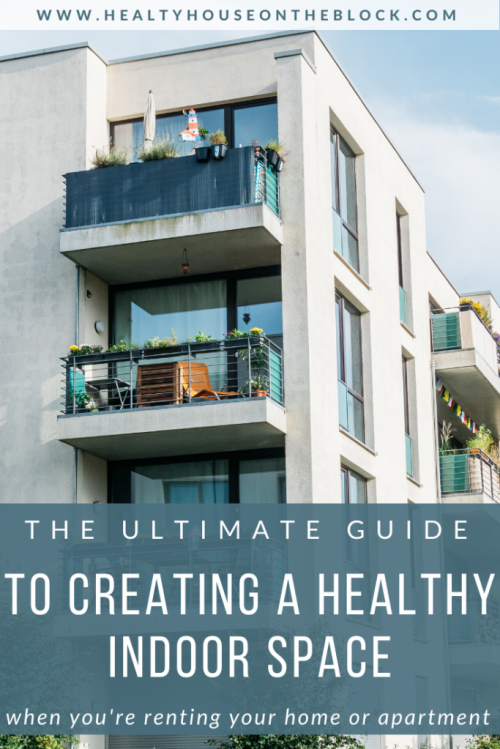
Create Healthy Laundry Habits: Whether you have a washer or dryer, or your line dry items in your apartment, there are some healthy habits to adopt in order to prevent moisture from raising your indoor humidity levels too much.
Both using a washer and dryer can create an environment with high humidity levels. However, this is more the case with dryers. Dryers heat laundry in order to create large amounts of moisture to dry quickly. This moisture mostly travels through the vent and safely outside, but some moisture does expel into indoor air. If you have a vented fan or a window near the laundry area, definitely use it to help reduce moisture levels.
If you’re line drying your laundry at home, make sure it’s in a space that has a fan or a window that will help pull moisture out of your space as the water evaporates from the clothing.
Add Houseplants that Absorb Moisture: This post I did a couple months ago talks specifically about what houseplants are best for each room. And what I found while I researched that topic, was that there are houseplants out there that will help regulate the humidity levels in your space.
Some great options are the Peace Lily, which helps absorb excess moisture. Another option is the Boston Fern, which can balance moisture levels in the air. And finally, my favorite, any Palm Plant helps absorb moisture through its leaves and regulate the humidity levels.
Prevent Window Condensation: Window condensation is one of the things we see most often in old spaces. It may seem like it’s just a nuisance, but in actuality, it can raise your indoor humidity levels substantially as the water evaporates in your space. Keeping condensation off of windows is the best way to reduce humidity in targeted areas. You can do this by moving furniture away from the windows in order to increase air flow around the windows. Also, if your apartment has forced air heating or cooling, make sure the vents are opened up.
Another way to prevent condensation on windows is to keep the shades open as much as possible to increase the airflow around the windows. But if all that doesn’t help, you can resort to simply wiping off the condensation regularly or sealing the windows in cold months with a window seal kit, which will help with drafts.


